Those of us fortunate enough to have been in Wooli recently may have seen the results of a major project to repair and enhance the dune. The project was Wooli’s second beach scraping following the first one in 2019.
What most observers probably don’t know is how close to defeat we came. The major threat was being unable to get all the must-haves together at the same time including beach and weather conditions, multiple licences for State departments, Council and State funding, scraping expertise/experience, heavy machinery, operators, and a low holiday season.
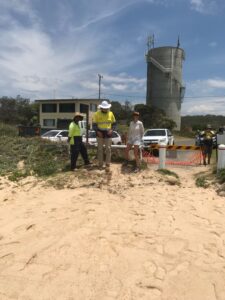 Ironically, beach and weather conditions had been perfect for scraping for several months during which
Ironically, beach and weather conditions had been perfect for scraping for several months during which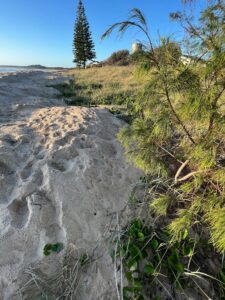 the struggle for licences continued and just as these appeared in reach, storms removed substantial sand. Council received the final licence only 3 weeks before it was due to expire (with years of delay then likely). The big question was whether the project could be completed in those 3 weeks.
the struggle for licences continued and just as these appeared in reach, storms removed substantial sand. Council received the final licence only 3 weeks before it was due to expire (with years of delay then likely). The big question was whether the project could be completed in those 3 weeks.
You can see from these photos that the answer was a resounding “yes”. While many hands were involved in making this happen, special thanks must go to key staff at Council, the State Environment department and to our resident surveyor Brian Saye.
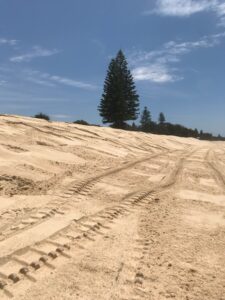 This is a good time to put the second scrape in context as part of the beach management strategy within Council’s long-term Coastal Zone Management Plan.
This is a good time to put the second scrape in context as part of the beach management strategy within Council’s long-term Coastal Zone Management Plan.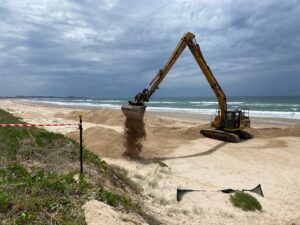
The strategy aims to protect the most vulnerable beach zone from a 1-in-50-year storm by adding 60,000 cubic metres of sand to the dune. The first two beach scrapes have contributed just over 22,000 cubic metres of that amount. CCPA has paid $45,000 (25%) toward the cost of these scrapes, raised primarily by member donations, supplemented by merchandise sales and Wooli Artist Group (WAG) donations.
It’s important to note that the project is by no means completed. Wooli is enjoying progress that many coastal villages can only dream of. Firstly, thanks to beach scraping, sand traps and revegetation, the dunes and village are better protected from erosion than at any time in living memory. Secondly, a vibrant cultural environment centred on WAG’s annual Art Show is flourishing driven by both long-term residents and newly arrived enthusiasts.
In recent years the relationship between CCPA and WAG has become increasingly beneficial to both as CCPA provides WAG with access to operational tools (corporate-licence, banking facilities and a website) while WAG continues to steadily grow its donations to CCPA.
Long-serving members of CCPA’s executive team will be retiring shortly. This will create the opportunity for new office bearers from CCPA’s greater Wooli community to take up the challenge of progressing our beach protection work. Confirming the CCPA-WAG relationship will be a key component of that journey.
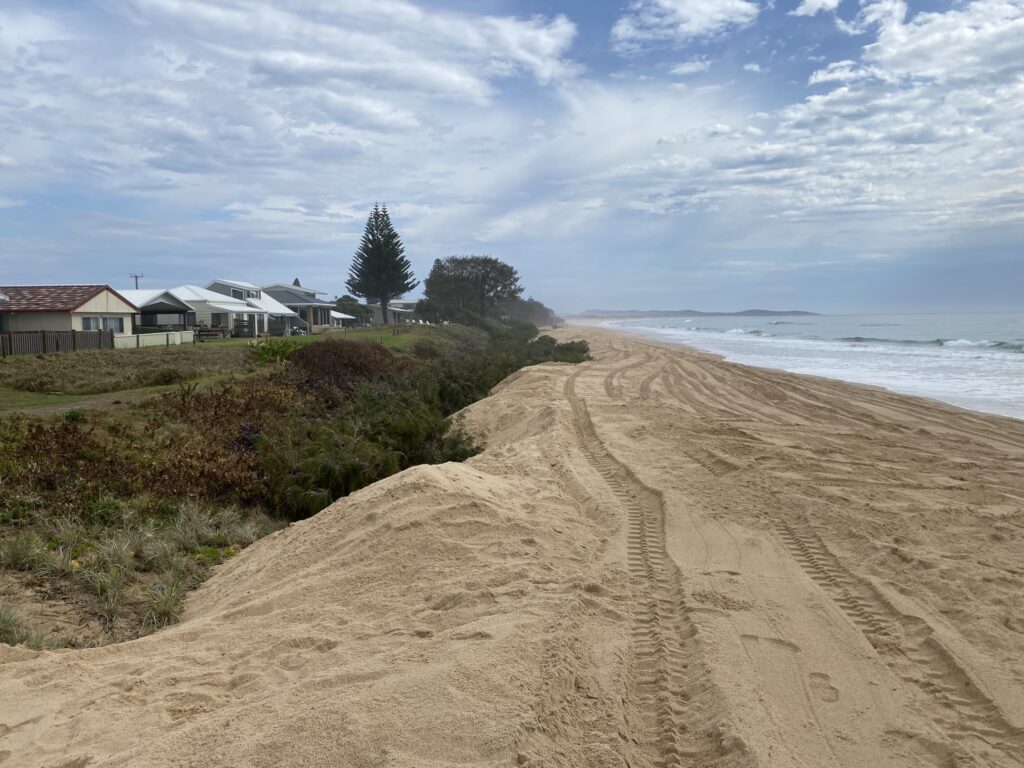

While it’s good to see work being done to protect the dunes other controls need to be considered and put in place such as,
Placement of sand traps along the effected areas to build up sand.
Vegetation to be planted out for dunes stability, fencing off the affected areas to minimise damage from tourists driving in the areas.
These areas are also vital to the wildlife breeding in these areas seasonal.
Weed mitigation needs to play a part as well not to smother the native species to help stabilise the dunes.
It’s also important that we not only protect the dunes but the river needs attention as well up at the mouth.
I have seen a massive amount of damage and vegetation get washed away due to the lack of protection ( rock facing plus Geofabric) to eliminate the washouts.
If the council would place timber stairs in areas this would potentially funnel the people to use the access points and not just walk down the banks which is contributing to the erosion.
I have lived here most of my life and have seen the good and the bad, positive contributions can make a massive difference.
Please close wooli beach to tourists driving on it
Hi Brenda.
As a community group, CCPA doesn’t have the authority to do this. If you’d like to take it further we suggest you contact Clarence Valley Council.
Looks good Peter and undoubtably lots of must haves, hoops and co-ordination involved…
Always a sensitive issue is that of the River and the amount of sand it is holding that would be so well received on the beach. On anything less than mid tide it is, in general, a navigational hazard with no clear Chanel from south Terrace to the rock wall and further upstream another story all together. Not only recreational boaters but also Marine Rescue are at risk on low water with less than a meter under the vessel on low tide should they need to activate swiftly to an emergency rescue. I know not your area but likely an area of a couple of those state departments.
Kind regards
Good topic for discussion at our Annual General Meeting on Jan 10th. Hope you can be there